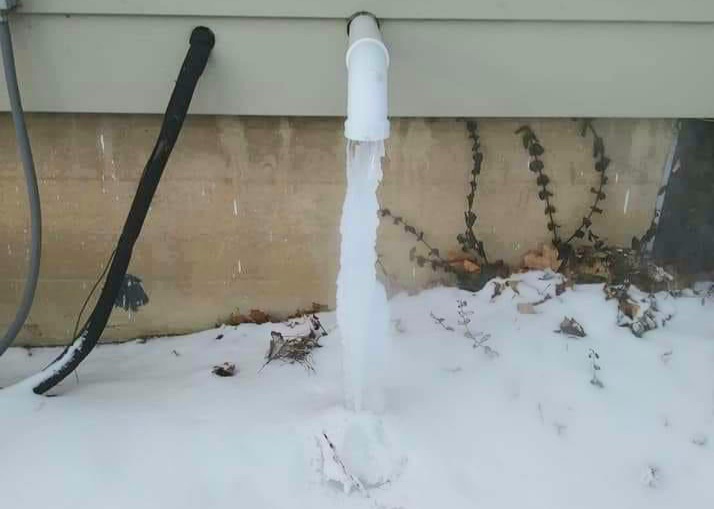“We are taking all the heat out of the exhaust and heating our homes. That’s why they [newer furnaces] are so efficient. So now the exhaust is cold and so when it gets outside, it can slowly build up and freeze.”
Joey Stephan co-owner with Guardian Plumbing and Heating says that’s the reason why high-efficiency furnaces are susceptible to the exhaust freezing off compared to the older systems. But he adds that should not be a reason to scare people off from a new furnace.
The danger is the risk of carbon monoxide building up in the home if the furnace exhaust is clogged. He notes that in older furnaces, the exhaust was through the chimney, but the risk there was that the entire exhaust pipe in the chimney would collapse if it clogged up.
He notes the challenges of the weather in the winter months.
“The biggest issue is extreme cold with wind. Even extreme cold won’t necessarily freeze it off. It can still maintain enough heat to get it out and keep itself warm, but with that wind trying to blow down it. That’s when we have the biggest issues. Extreme cold and wind; that’s when you want to watch it the most.”
Stephan says homeowners need to know where the exhaust is for their boilers and furnaces and be checking that there is no snow build up or other blockages especially after a snow dump. He says to set reminder alerts in your calendar to check on a regular basis and shares education on the new maintenance regimen.
“They get clogged up if the wind hits into them, it will shut them down. There’s a few issues, but they are still worth purchasing. They’re way more efficient on electricity and gas. They need maintenance and sometimes you need to make sure that you clear that snow that’s building up outside. Sometimes if you have a hot-tub or a dryer anywhere near those outlets, the intakes for them can frost up really bad.”
Stephan turned to the issue of carbon monoxide building up in the house. Even though with a proper working unit, it will shut off automatically, the risk of exhaust fumes from a clogged furnace pipe is of concern.
“That exhaust is in your house; you’re going to go to sleep and you’re not going to wake up. That’s scary. That’s a scary thing. So I recommend having a minimum of two carbon monoxide detectors in your house. Because every piece of equipment we work on has a safety and an operating control. Because if one fails; you need to have two. It’s all about having that extra person watching your back.”
Stephan recommends a carbon monoxide detector for the basement and the main floor.
He notes the new furnaces require extra maintenance, but the benefits accrue on efficient energy usage savings and reduced home insurance.
“Maintenance; all of it is very important. Even your home insurance will help you with that. We have our protection plan members; we’ve even had customers tell us that their insurance bills went down by $200 because they are maintaining their equipment and keeping themselves safe in their houses.”
He says as well residents can look out for each other, as a neighbour will easier see that a chimney is frozen.
“Watch your neighbour’s house. If you see their chimney is completely iced off, that’s something you can watch for. A lot of people, their exhausts are coming out onto their driveways. You can watch their windows. A house that has a ton of exhaust going into it, will have a ton of humidity in the house.”
Stephan adds no one wants to see a neighbour get caught off guard and die from carbon monoxide poisoning.
More information can be found on the Guardian Plumbing & Heating Youtube Channel.




